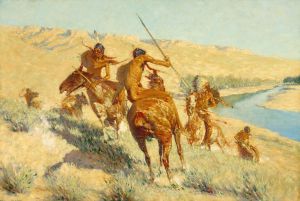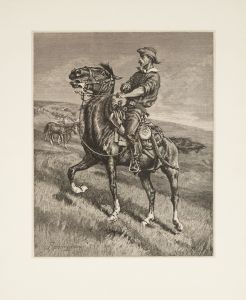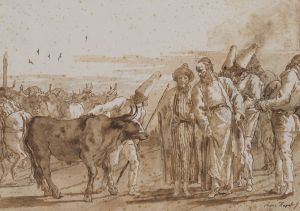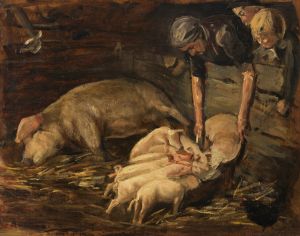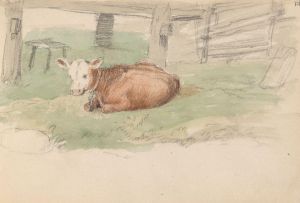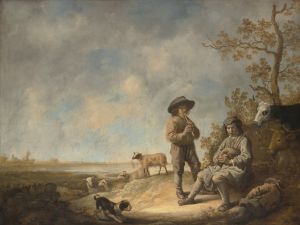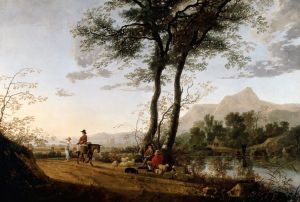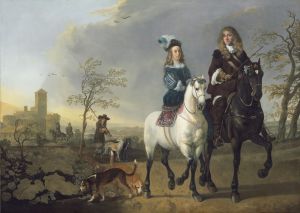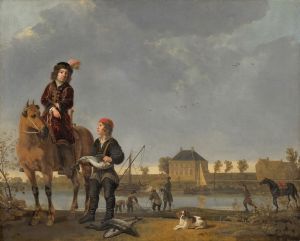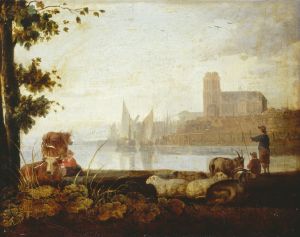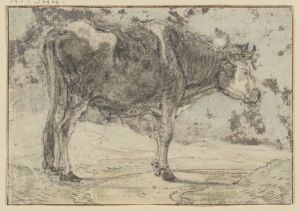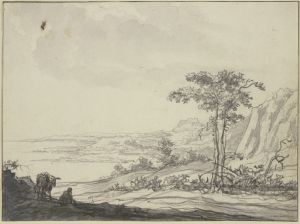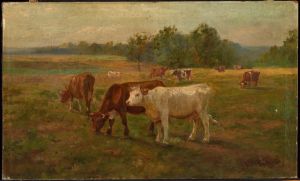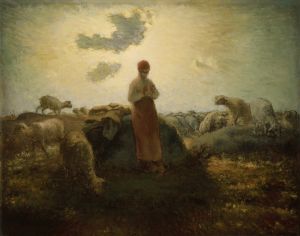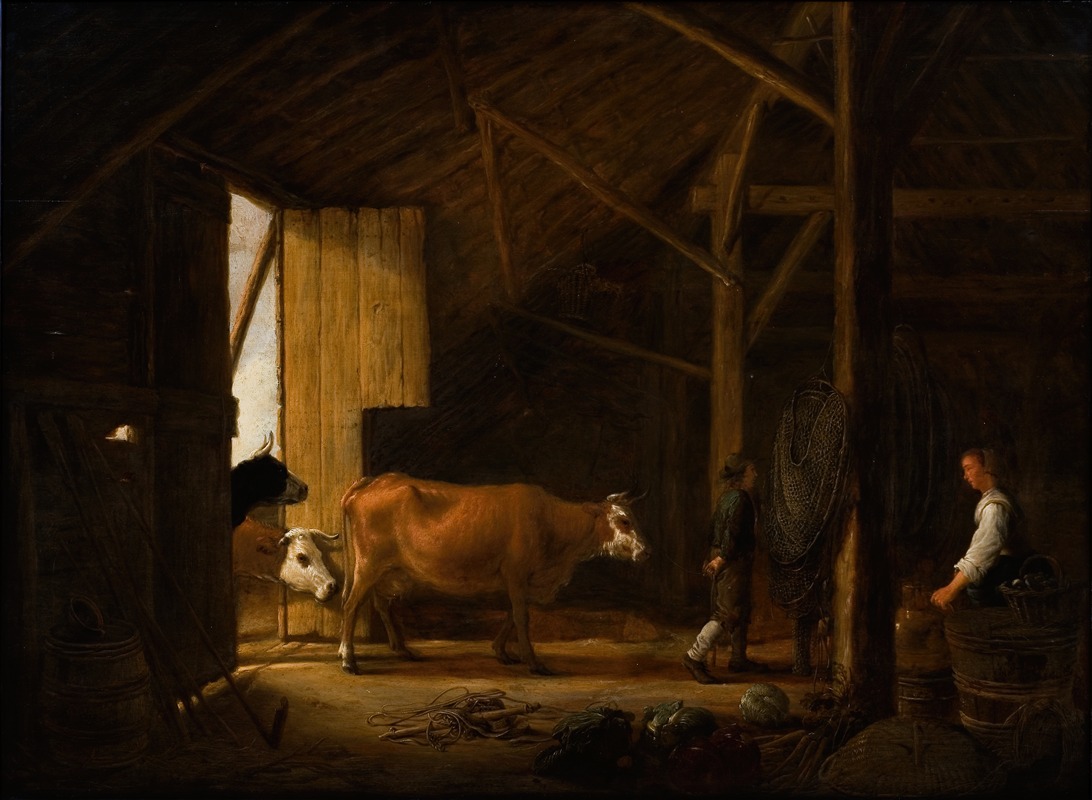
Interior of a Cowshed
A hand-painted replica of Aelbert Cuyp’s masterpiece Interior of a Cowshed, meticulously crafted by professional artists to capture the true essence of the original. Each piece is created with museum-quality canvas and rare mineral pigments, carefully painted by experienced artists with delicate brushstrokes and rich, layered colors to perfectly recreate the texture of the original artwork. Unlike machine-printed reproductions, this hand-painted version brings the painting to life, infused with the artist’s emotions and skill in every stroke. Whether for personal collection or home decoration, it instantly elevates the artistic atmosphere of any space.
Aelbert Cuyp, a prominent Dutch landscape painter of the 17th century, is renowned for his pastoral scenes and masterful use of light. One of his lesser-known works, "Interior of a Cowshed," exemplifies his ability to capture the serene beauty of rural life, though specific details about this painting are scarce.
Aelbert Cuyp was born in Dordrecht, Netherlands, in 1620, into a family of artists. His father, Jacob Gerritsz Cuyp, was a notable portrait painter, and Aelbert was trained under his guidance. Cuyp's work is often associated with the Dutch Golden Age of painting, a period marked by great wealth and cultural achievement in the Netherlands. This era saw the rise of genre painting, landscapes, and still lifes, with artists focusing on everyday scenes and the natural world.
"Interior of a Cowshed" is a testament to Cuyp's skill in depicting rural settings with a sense of tranquility and warmth. Although specific information about the painting's creation, such as its date and current location, is not readily available, it is consistent with Cuyp's broader oeuvre, which often includes depictions of farm animals, pastoral landscapes, and the interplay of light and shadow.
Cuyp's landscapes are characterized by their luminous quality, achieved through his adept use of chiaroscuro—a technique that contrasts light and dark to create a sense of depth and volume. In "Interior of a Cowshed," this technique likely enhances the texture of the animals' coats and the rustic interior of the barn. His attention to detail and the realistic portrayal of light filtering through the barn's openings would have contributed to the painting's atmospheric effect.
The subject matter of "Interior of a Cowshed" reflects the agrarian lifestyle that was prevalent in the Netherlands during Cuyp's time. The Dutch economy was heavily reliant on agriculture, and scenes of rural life were popular among patrons who appreciated the idyllic representation of the countryside. Cuyp's work often appealed to the tastes of wealthy collectors who valued the depiction of their land and livestock, symbolizing prosperity and a connection to nature.
Cuyp's influence extended beyond his lifetime, as his work was admired and collected by artists and connoisseurs in England during the 18th and 19th centuries. His ability to convey the serene beauty of the Dutch landscape and rural life left a lasting impact on landscape painting, inspiring artists such as Thomas Gainsborough and J.M.W. Turner.
While "Interior of a Cowshed" may not be as widely recognized as some of Cuyp's other works, it remains an important piece within his body of work, illustrating his mastery of light and composition. The painting serves as a window into the pastoral world of 17th-century Netherlands, capturing the simplicity and harmony of rural life with a timeless appeal.
In summary, Aelbert Cuyp's "Interior of a Cowshed" is a reflection of his expertise in landscape painting and his ability to depict the peaceful essence of the Dutch countryside. Though specific details about the painting are limited, it stands as a testament to Cuyp's enduring legacy as a master of light and pastoral scenes.





